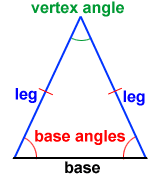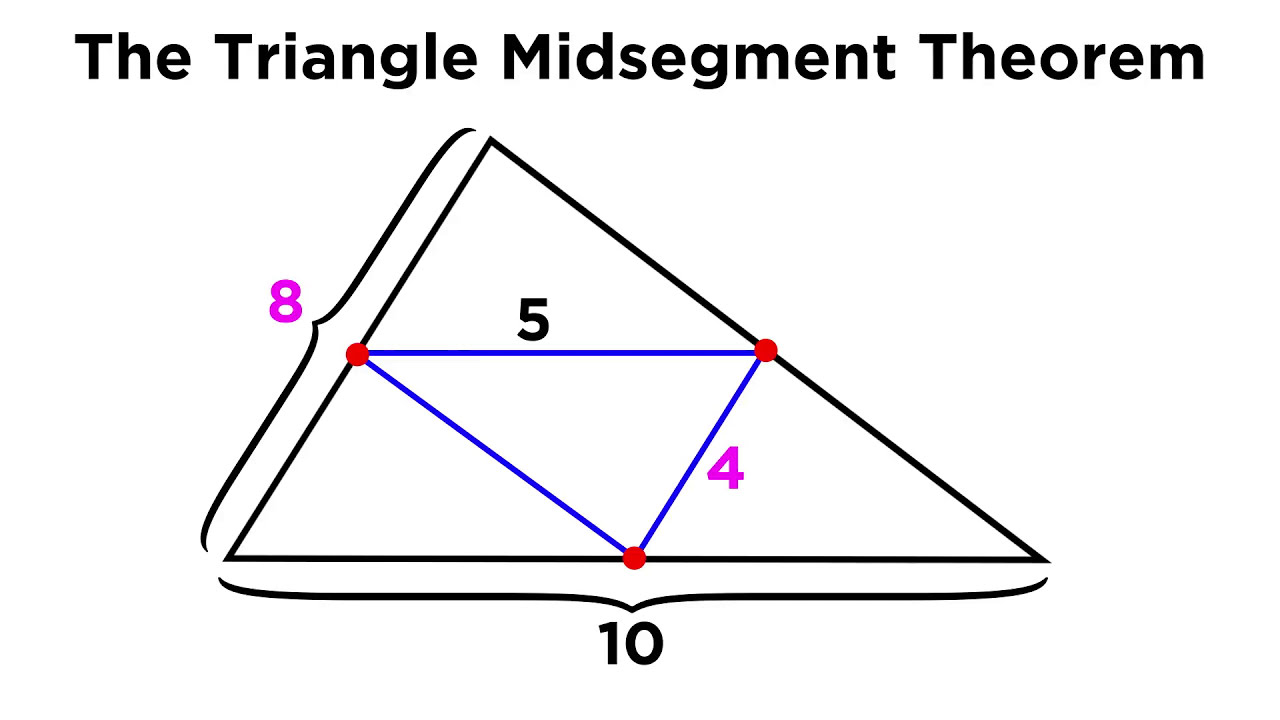Geometry Vocabulary
5.0(1)
5.0(1)
Card Sorting
1/38
Earn XP
Study Analytics
Name | Mastery | Learn | Test | Matching | Spaced |
|---|
No study sessions yet.
39 Terms
1
New cards
Isosceles Triangle
Triangle with two congruent sides
2
New cards
Equilateral Triangle
Triangle with all congruent sides
3
New cards
Opposite Side
A side located to the opposite direction of a specific angle
4
New cards
Opposite Angle
An angle located to the opposite direction of a specific side
5
New cards
Corollary
A theorem that can be used to prove another theorem
6
New cards
Parts of an Isosceles Triangle
Base
Legs
Vertex Angle
Base Angles
Legs
Vertex Angle
Base Angles

7
New cards
Base
Non-congruent side
8
New cards
Legs
Congruent sides
9
New cards
Vertex Angle
Angle between the 2 legs
10
New cards
Base Angles
Angles between the base and the legs
11
New cards
Isosceles Angle Theorem
If two sides of a triangle are congruent, then the angles opposite to those sides are congruent
12
New cards
Converse of the Isosceles Angle Theorem
If two angles of a triangle are congruent, then the sides opposite to those angles are congruent
13
New cards
Theorem 4.5
If a line bisects the vertex angle of an isosceles triangle, then the line is also a perpendicular bisector to the base
14
New cards
Corollary of Theorem 4.3
If a triangle is equilateral, then the triangle is also equiangular
15
New cards
Corollary of Theorem 4.4
If a triangle is equiangular, then the triangle is also equilateral
16
New cards
Right Triangle
Triangle that has 1 right angle
17
New cards
Hypotenuse
A side located to the opposite direction of the right angle in a right triangle
18
New cards
Legs (Right Triangle)
Sides that are not the hypotenuse
19
New cards
Hypotenuse-Leg Theorem (HL)
If the hypotenuse and the leg of one triangle are congruent to the hypotenuse and a leg of another right triangle, then the triangle are congruent
20
New cards
Triangle Midsegment Theorem
If a segment joins the midpoint of two sides of a triangle, the the segment is parallel to the third side, and is half long.

21
New cards
Perpendicular Bisector
Line that cuts another line into 90° angles
22
New cards
Angle Bisector
Line that cuts an angle in half
23
New cards
Equidistant
Something that is at the same distance from 2+ figures
24
New cards
Distance
Perpendicular segment from the point to the line. At the same time, the distance did the shortest segment from said point to said line.
25
New cards
Perpendicular Bisector Theorem
If a point is on the perpendicular bisector of a segment, then it is equidistant from the endpoints of the segments
26
New cards
Converse of the Perpendicular Bisector Theorem
If a point is equidistant from the endpoints of the segments, then it is on the perpendicular bisector of a segment
27
New cards
Angle Bisector Theorem
If a point is on the bisector of an angle, then the point is equidistant from the sides of the angle
28
New cards
Converse of the Angle Bisector Theorem
If the point on the interior of an angle is equidistant from the sides of the angle, then the point is on the bisector of an angle
29
New cards
Concurrency
When 3+ lines intersect at one point. The point where they intersect is the **point of concurrency**.
30
New cards
Concurrency of Perpendicular Bisectors Theorem
The perpendicular bisectors of the sides of a triangle are concurrent at a point equidistant to the vertices
31
New cards
Circumscribed
Point of concurrency of the perpendicular bisector of a triangle. If you trace a circle around the vertices of a triangle, the point of concurrency is also the center of said circle.
32
New cards
Concurrency of Angle Bisectors Theorem
The angle bisectors of a triangle are concurrent at a point equidistant to the sides of the triangle
33
New cards
Inscribed
The point of concurrency of the angle bisectors of a triangle is called the incenter. This is because if you trace a circle that touches all the sides of the triangle, the point of concurrency is the center of said circle.
34
New cards
Median of a Triangle
Segment whose endpoints are the vertex and the midpoint of the opposite side of a triangle
35
New cards
Centroid of a Triangle
Point of concurrency of the medians of a triangle (always inside)
36
New cards
Concurrency of Medians Theorem
The medians of a triangle are concurrent at a point (centroid) that is at the 2/3 the distance between the vertex and the midpoint of the opposite side
37
New cards
Altitude of a Triangle
A perpendicular segment from a vertex of a triangle to a line contained in the opposite side. It can be inside, on or outside the triangle
38
New cards
Orthocenter of a Triangle
The point of concurrency of the altitudes of a triangle. Inside, outside or on the triangle
39
New cards
Concurrency of Altitudes Theorem
The lines that contain the altitudes of a triangle are concurrent at an orthocenter